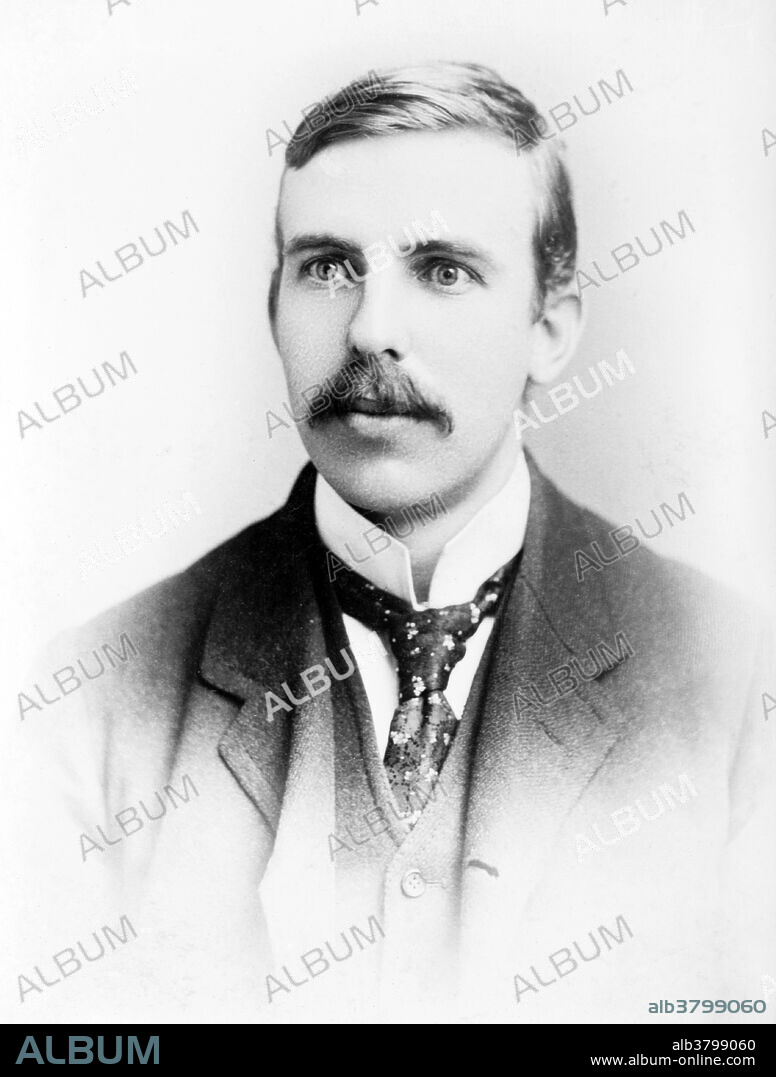alb3799060
Ernest Rutherford, New Zealand Physicist

|
Add to another lightbox |
|
Add to another lightbox |



Buy this image.
Select the use:

Title:
Ernest Rutherford, New Zealand Physicist
Caption:
Ernest Rutherford (August 30, 1871 - October 19, 1937) was a New Zealand-born British chemist and physicist who became known as the father of nuclear physics. He discovered the concept of radioactive half-life, proved that radioactivity involved the transmutation of one chemical element to another, and also differentiated and named alpha and beta radiation, proving that the former was essentially helium ions. This work was done at McGill University in Canada. It is the basis for the Nobel Prize in Chemistry he was awarded in 1908. In 1911, he theorized that atoms have their positive charge concentrated in a very small nucleus, and thereby pioneered the Rutherford model of the atom, through his discovery and interpretation of Rutherford scattering in his gold foil experiment. He is widely credited with first "splitting the atom" in 1917 in a nuclear reaction between nitrogen and alpha particles, in which he also discovered (and named) the proton. After his death in 1937, he was honored by being interred with the greatest scientists of the United Kingdom, near Sir Isaac Newton's tomb in Westminster Abbey. The chemical element rutherfordium (element 104) was named after him.
Personalities:
Category:
Science: Personalities
Credit:
Album / LOC/Science Source
Releases:
Image size:
3600 x 4750 px | 48.9 MB
Print size:
30.5 x 40.2 cm | 12.0 x 15.8 in (300 dpi)
Keywords:
19TH CENTURY • 1ST BARON RUTHERFORD OF NELSON • 20 20TH XX XXTH TWENTIETH CENTURY • 20 XX TWENTIETH CENTURY • 20TH CENTURY • 20TH • BRITISH • BW • CELEBRITIES • CELEBRITY • CHEMIST • CHEMISTRY • DISCOVERED THE PROTON • E. RUTHERFORD • ERNEST RUTHERFORD • FAMOUS PEOPLE • FAMOUS • FATHER OF NUCLEAR PHYSICS • FIGURE • HISTORIC • HISTORICAL • HISTORY • IMPORTANT • MALE • MAN • MEN • NEW ZEALAND-BORN • NOBEL LAUREATE • NOBEL PRIZE LAUREATE • NOBEL PRIZE RECIPIENT • NOBEL PRIZE WINNER • NOBEL PRIZE • NOBEL RECIPIENT • NOBEL WINNER • NOBEL • NOBELIST • NOTABLE • NUCLEAR PHYSICIST • PEOPLE • PERSON • PERSONALITIES • PERSONALITY • PHOTO • PHOTOGRAPH • PHYSICIST • PHYSICS • PORTAIT • PORTRAIT • POTRAIT • RUTHERFORD • RUTHERFORDIUM • SAVANT • SCIENCE • SCIENCE: PERSONALITIES • SCIENTIFIC • SCIENTIST • SPLITTING THE ATOM • TWENTIETH CENTURY • WELL-KNOWN


 Pinterest
Pinterest Twitter
Twitter Facebook
Facebook Copy link
Copy link Email
Email
